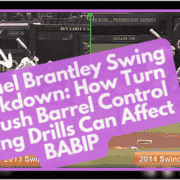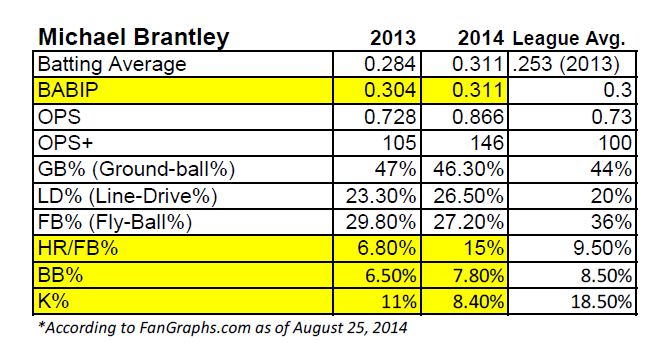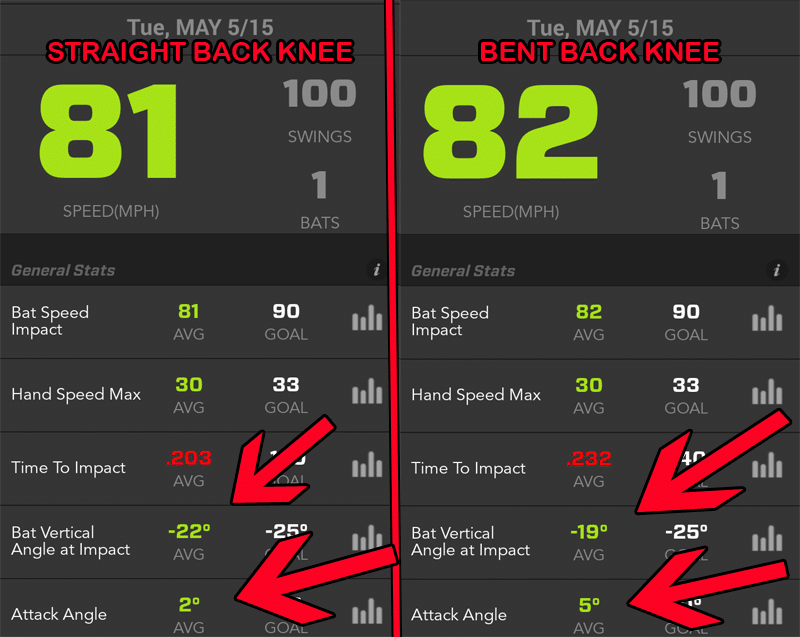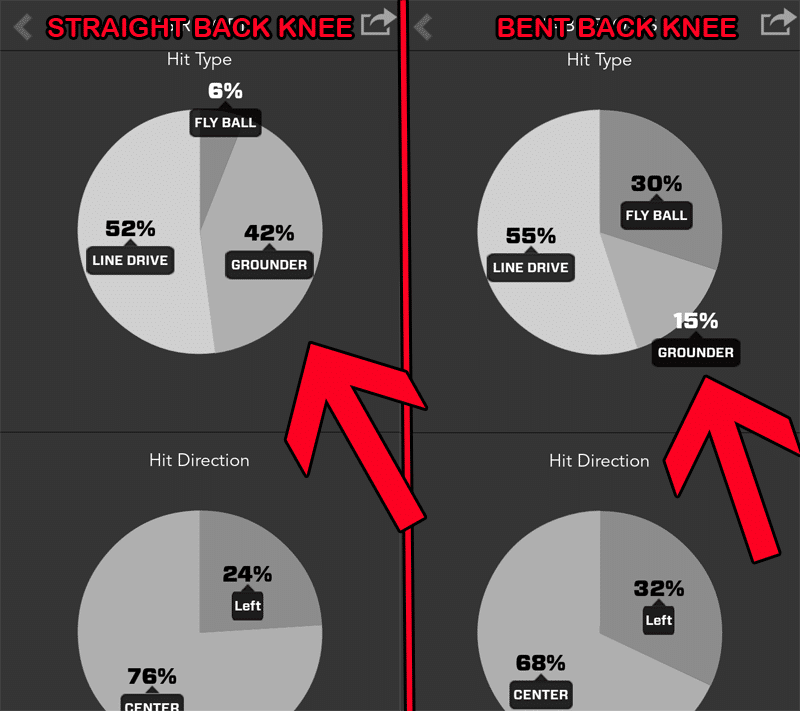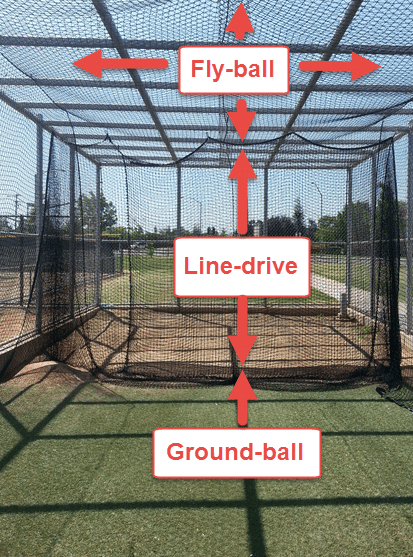Discover in this Michael Brantley swing breakdown: how turn the barrel vs push the barrel control hitting drills can affect the BABIP (Batting Average on Balls in Play) luck formula. Learn if ‘keep hands above the ball’, ‘dumping the barrel’, or ‘staying short to the ball are good cues for baseball and softball hitters.
Michael Brantley: NEVER Worry About Batting Average Again?
Last week, I received a question from Brian Petrick that birthed this post:
“What do mlb players need to do to hit for a higher avg consistently and cut down on k’s. Not many .300 plus hitters today.”
I have to thank my Sabermetrics friends at RockiesZingers.com – namely Richard Bergstrom – for introducing me to a key metric that better measures how consistently a batter hits the ball rather than Batting Average. Enter BABIP. FanGraphs.com says this about BABIP:
“Batting Average on Balls In Play (BABIP) measures how often a ball in play goes for a hit. A ball is “in play” when the plate appearance ends in something other than a strikeout, walk, hit batter, catcher’s interference, sacrifice bunt, or home run. Several variables that can affect BABIP rates for individual players, such as defense, luck, and talent level.”
In this video post, we’re going to analyze:
- Why analyze Michael Brantley (lefty hitting outfielder of the Houston Astros)?
- What’s the difference in his 2013/2014 swings? AND
- How can he improve his repeatable power?
SCIENCE-BASED TRAINING:
Improve your hitting strategy dramatically by applying human movement principles.
Learn not only how and what to train but also the science behind the methods.
Why Analyze Michael Brantley?
According to FanGraphs.com he’s 6 foot, 2 inches, 200 pounds. Not a big guy by today’s standards. 2014 was the first time he was selected to the American League All-Star team.
Michael Brantley’s 2013-2014 stats were a perfect example to answer Brian Petrick’s question from earlier (photo of stats to the right)…
- 138 point jump in OPS (On-Base + Slug%),
- BABIP has gone well above average,
- GB% went down, LD% went up, and FB% went down, while
- Home-run to fly-ball% more than DOUBLED!
- Walk% went up, and
- Strikeout% almost cut in half!
Yes, according to my stat table, the 2014 season isn’t done yet. But the amount of “hits” he accumulated in 2013 (158) is virtually the same as 2014 (151). Hits are a major part of the BABIP equation. So, what is he doing differently with his mechanics?
What’s the Difference in his 2013/2014 Swings?
After Brian Petrick sent me that question, I obsessed over how-to build consistency into a hitter’s swing (increase BA & BABIP) that could also cut down on strikeouts. My hypothesis was to get the barrel on pitch plane EARLIER (closer to the catcher), which would translate to more margin for error afforded by the batter.
Take a batter being late on a fast-ball, for example:
- If the barrel entering the impact zone is closer to the catcher, driving the pitch to the opposite field is an option.
- However, if the same barrel enters the impact zone closer to the pitcher, the hitter is more likely to swing and miss or hit the ball weakly.
Both Michael Brantley’s 2013 & 2014 swing videos show he’s entering the pitch plane closer to the catcher, and staying long through impact. But upon closer inspection, we can see he’s “staying shorter” longer through the Final Turn, in 2014. It looks like he’s
“standing up” in his 2013 swing.
You see, the torso sets the upward swing plane, NOT the hands. By bending his back leg more at impact (around 10-degrees closer to a right angle than in 2013), makes a HUGE difference in consistently staying on plane of the pitch longer. Take a quote from page 36 of Homer Kelly’s book, The Golfing Machine:
“A rotating motion will pass through a given point if the axis is tilted properly, instead of having to apply a compensating vector force to drive the rotating element off its normal plane towards the desired plane line.”
Homer Kelly, an aeronautical engineer for Boeing back in the 1930’s, applied scientifically proven human movement principles to the golf swing.
How Can he Improve his Repeatable Power?
According to FanGraphs.com, Zip (U) and Steamer (U) statistics predict Brantley will hit 20-21 homers in 2014. This would double what he did in 2013. The same predictive stats show he’ll finish between .846 to .849 in OPS (On-Base + Slug%). Conservatively, this would be a dramatic 118 point rise!
With the following FOUR mechanical tweaks, we could see Michael Brantley – with his body type – hitting over 30 homers per year:
- Forward Momentum,
- More downward shoulder angle,
- Showing numbers better, and
- Hiding hands from pitcher more.
You saw the difference bending the back leg more at impact does to key offensive numbers like BABIP, BA, and Strikeout%. Also just as important is how close to the catcher a batter’s barrel enters the pitch plane, and how well his “stay through” is after contact. Brantley already does these well.
However, at the very least, if Michael Brantley engages the natural springy fascia material within his body (mechanical tweak #’s 2-4 from above), then he can be one of the top-10 hitters in the league!

